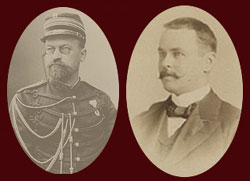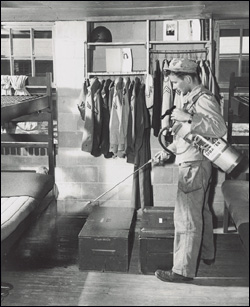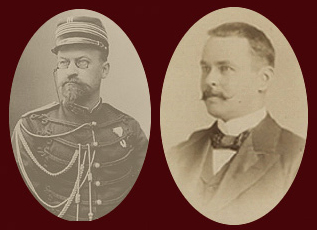 |
To date, four Nobel Prizes (all in Physiology or Medicine)
have been awarded for work associated with malaria.
|
|
Alphonse Laveran (L) and Ronald Ross (R), malaria
pioneers whose discoveries were recognized by Nobel Prizes.
(Courtesy:
Service de Santé des Armées [Health Services of the Armed Forces],
France; London School of Hygiene and Tropical Medicine) |
 |
Two Nobel Prizes recognized key discoveries on the nature of malaria and its
transmission:
- Alphonse Laveran was awarded
the prize in 1907 "in recognition of his work on the role played by protozoa in causing
diseases". On November 6, 1880, Laveran, a French army surgeon stationed in Constantine,
Algeria, was the first to notice parasites in the blood of a patient suffering from malaria.
 |
 |
 |
Alphonse Laveran (L) and Ronald Ross
(R)
(Courtesy: Service de Santé des Armées [Health
Services of the Armed Forces], France; London School of Hygiene and Tropical
Medicine) |
 |
Ronald Ross was awarded the prize in
1902, "for his work on malaria, by which he has shown how it enters the organism and thereby
has laid the foundation for successful research on this disease and methods of combating it". On August 20, 1897, Ronald Ross, a British
officer in the Indian Medical Service, was the first to demonstrate that malaria parasites
could be transmitted from infected patients to mosquitoes. In further work with bird
malaria, Ross showed that mosquitoes could transmit malaria parasites from bird to bird.
Thus, the problem of malaria transmission was solved.
A third Nobel Prize was awarded for work that used malaria to treat another disease:
- Julius Wagner-Jauregg received the
1927 Nobel
Prize "for his discovery of the therapeutic value of malaria inoculation in the treatment
of dementia paralytica". A professor of psychiatry and neurology in Vienna (Austria),
Wagner-Jauregg developed methods for treating general paresis ("dementia paralytica"; the
neurologic, advanced stage of syphilis) by
inducing fever through deliberate infection of patients with malaria parasites. While this
method was not always effective or devoid of risks, it was used in the 1920s and 1930s. In
the 1940s, the advent of penicillin and more modern methods of treatment made such "malaria
therapy" obsolete.
A fourth Nobel Prize was awarded for a discovery that deeply influenced malaria control:
 |
 |
 |
Indoor DDT spraying in the 1940s in a military
facility in the Southeastern United States, shortly after this insecticide was
introduced. |
 |
Paul Hermann Müller received the
1948 Nobel
Prize "for his discovery of the high efficiency of DDT as a contact poison against
several arthropods". This Swiss chemist discovered the insecticidal properties of DDT
(dichloro-diphenyl-trichlorethane) in 1939 while working at the firm J. R. Geigy in Basel,
Switzerland. Products containing DDT were marketed in 1942. This synthetic insecticide
proved invaluable in fighting epidemic
typhus
(a disease transmitted by lice) during World War II. DDT's greatest public health use was
probably in controlling malaria, thanks to its combined advantages of insecticidal
properties, lack of acute toxicity to humans, and long duration of action. In malaria-endemic
areas, spraying DDT twice a year on the inside walls of houses could prevent mosquitoes
from transmitting malaria. This strategy,
"indoor residual insecticide spraying",
contributed to the eradication of malaria from many countries (including the
United States) during the 1950s - 1970s. In
addition to its public health role, DDT also found substantial use as an agricultural
insecticide. However, the usefulness of DDT has now been severely curtailed. Insects
resistant to DDT have evolved, and DDT resistance is one of the factors blamed for the failure
in the 1970s of the malaria eradication campaign (although
DDT is still effective in controlling malaria in many countries today). Concerns have been
raised that accumulation and persistence of DDT, predominantly from agricultural use, may
result in negative environmental impact. Because of these concerns, the agricultural use of
DDT is banned in all countries, although its use for malaria control is still permitted in
some countries until suitable replacement insecticides are found.
Page last modified : January 26, 2004
Content source: Division of Parasitic Diseases
National Center for Zoonotic, Vector-Borne, and Enteric Diseases (ZVED)
|
 |
|





